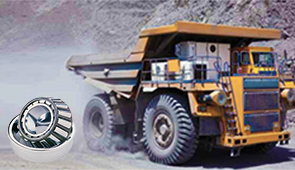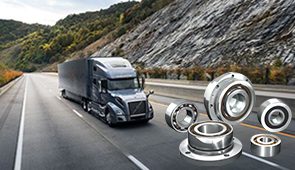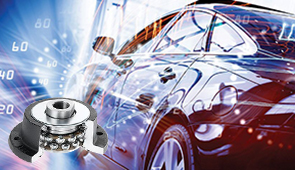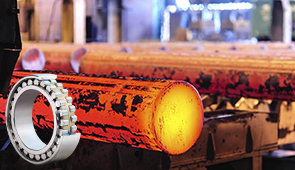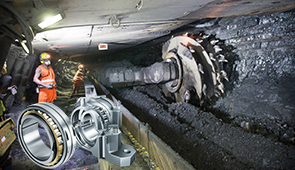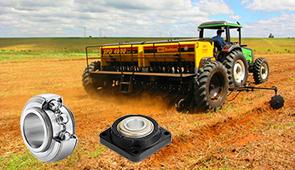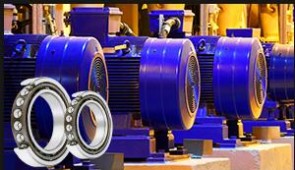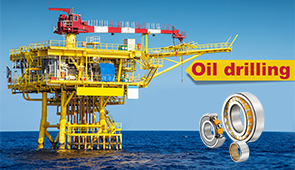Understanding Slewing Bearings: A Comprehensive Guide to Slewing Rings and Applications
Slewing bearings, often referred to as slewing rings, are integral components in some of the most demanding industrial and mechanical applications. These versatile, high-capacity bearings are designed to manage complex loads, including axial, radial, and tilting moment loads, making them essential for machinery across sectors such as construction, energy, mining, and robotics. But what exactly are slewing bearings, and why are they so critical to the performance and longevity of heavy-duty equipment? This guide will demystify the world of slewing bearings, exploring their design, functionality, types, and applications. Whether you’re an engineer, a technician, or simply curious about advanced mechanical systems, this article will empower you with the insights needed to fully understand these powerful mechanical solutions.
What is a slewing bearing, and how does it work?
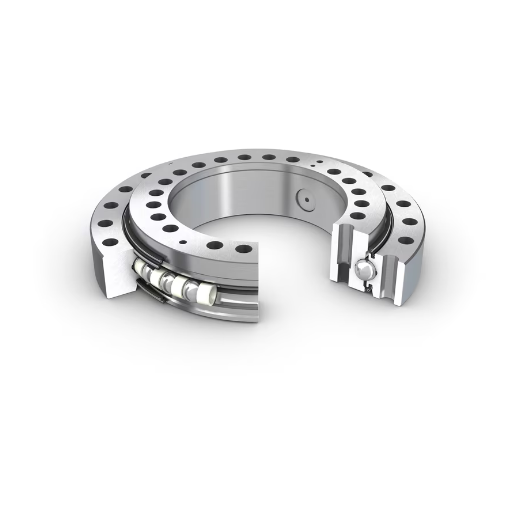
The role of slewing rings in machinery
Slewing rings, or slewing bearings, are important parts of machines wit rotational motion and heavy load handling. They provide solid support interfaces between a stationary part and a rotating component of the equipment, allowing movement even under difficult conditions. They usually have an inner ring and an outer ring, which are divided by rows of rolling elements like balls or rollers that reduce friction during operation.
Slewing rings are particularly designed to bear axial, radial, and tilting moment loads at the same time. This makes them essential in equipment used in different sectors like construction, energy, and transport. For example, in cranes, slewing rings enable smooth rotation of the upper structure without interference while allowing load bearing at the same time. Additionally, they are important components of wind turbines where swift and accurate adjustment of blades or nacelles for wind energy optimization is done.
Slewing rings are technological advancements that combine durability with performance, even in extreme temperatures or highly corrosive conditions. Their capabilities in handling both dynamic and static stresses enable their versatility in application which ranges from excavators and platforms to medical devices and military apparatuses. Optimally designed slewing rings result in greater reliability of the machinery, longer servicable life, safe operation and makes these rings critical for complex mechanical systems.
Key components of slewing bearings
Slewing bearings are made up of several integral components which, together, provide the needed performance and reliability for different applications at the same time. The first two components of the bearing are set to be the inner and outer rings that form the basic structure of this bearing. In most cases these rings have some gear teeth either at the inner surface or at the outer surface which enables rotation. The rings would need to be accurately machined so that they can freely move and properly align within the system.
The rolling elements are also very important. These can be ball bearings or cylindrical rollers. These elements are arranged within the raceways and enhance the load bearing and rotational motion capabilities of the bearing. The rolling elements have the ability to bear axial, radial, or combined loads based on the application, thus making accommodating operational requirements easier.
Along with these components, together as one unit, spacers, seals, and lubrication systems assist in improving the efficiency and the durability of the machine. Spacers maintain proper alignment of the rolling components to avoid the occurrence of misalignment or high friction. Seals encase the rolling element bearings’ interior to protect it from causing its functionality to decrease in the long run. Lubrication aids in the reduction of the wearing out of parts and the loss of energy, which increases service life, ensures safe operation, and can affect the maintenance of the machinery. Everything works together in supporting the multitude of functions that the slewing bearings are subjected to.
Why are slewing ring bearings essential in various industries?
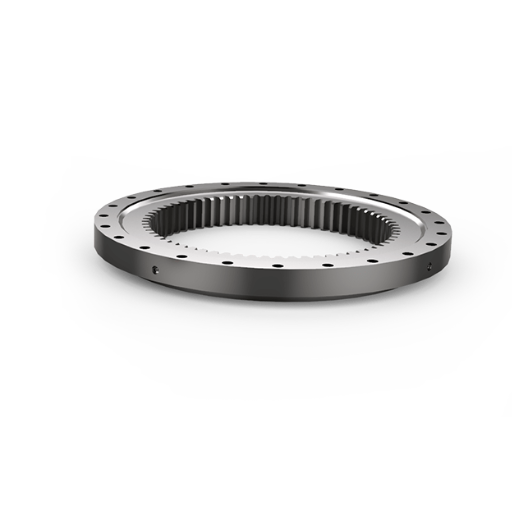
Applications of slewing rings in cranes and heavy machinery
Like all sections of heavy machinery, cranes also depend upon slewing ring bearings for their reliable rotating and load-bearing functionalities. Within cranes, slewing rings permit pivotal movement of the crane structure, which enables precise positioning of the load concerning operational needs. These bearings are designed for considerable support of axial and radial loads alongside tilting moments, which maintain stability as well as boost overall performance while lifting heavy loads.
In Excavators and other types of heavy-duty equipment, slewing rings also allow relative rotation of the upper structure while the undercarriage remains stationary, making them extremely useful for controlled operations during excavation or material handling. Exposed to general environmental moisture and a lot of debris, advanced designs with over-enhanced seals out of high-grade steel do experience corrosion resistance while also adding to overall endurance for improved sustained efficiency under extreme conditions.
Aside from that, the integration of automated lubrication systems into slewing rings has been lowering maintenance requirements while improving reliability. These improvements propel slewing ring bearings to the frontline of the most useful devices in precision-demanding, durable, and high-endurance rotation systems.
The importance of slewing bearings in wind turbines
Slewing bearings, control the yaw and pitch of wind turbines, ensuring maximum energy capture and enhancing the system’s efficiency, making them pivotal components of wind turbines. The yaw bearing is in charge of energy capture as it makes sure that the nacelle is aligned properly with the wind’s direction, while the pitch bearing alters the angle of the blades set to control the rotational speed and limit loads in different wind conditions.
Along with other modern designs of slewing bearings, wind turbine bearings are subjected to extreme axial, radial, and tilting moment loads, making them some of the strongest bearings in the market. They are precision manufactured from advanced materials strengthened for aggressive wear and corrosion, while the incorporation of new sealing systems improves protection from the environment. Advanced lubrication systems that provide uncontested maintenance-free services further minimize friction, enabling long-life bearings.
A bearing failure and costly repairs of the turbine system are one of the major problems reported in the bearings of wind turbine rotors. It is critical to improve bearing construction by monitoring their condition in real time, employing predictive maintenance strategies, and using advanced steel alloys. These techniques will not only facilitate improved precision but also foster sustainability and reliability. These modifications will improve the reliability of the wind turbines and support the reduction of wind turbines’ downtime and yield greater overall energy efficiency.
Use of slewing ring bearings in construction and robotics
Slewing ring bearings are essential in construction and robotics for their balancing ability to enormous axial and radial forces, along with high tilting moments, all in a compact, streamlined form. They are widely used in construction machines, like cranes, excavators, and other heavy machinery, which require accurate, precise rotational movement alongside powerful load-handling capabilities. These bearings significantly assist with the programmed rotation of crane booms or excavator buckets, which in turn enhances operational efficiency and safety during construction. Incorporation of high-strength materials together with optimally designed sealing systems has also improved the durability and performance of slewing bearings working under extreme environmental conditioning changes typical in construction sites.
Slewing ring bearings play a crucial role in robotics by providing accurate and controlled rotational movement for industrial robotic arms, automated guided vehicles (AGVs), and medical robots. Their small size and ability to bear heavy loads allow engineers to design robotic systems with optimized performance—that is, reduced weight and dimensions. For instance, cross roller slewing bearings are used in robotics because of their high stiffness and precise rotation, helpful in delicate tasks like surgery or assembly. In addition, improved lubrication and bearing surface treatments increase the intervals between maintenance, enhance the life of the components, and sustain high reliability servicing for very dynamic applications.
Slewing ring bearings showcase their multifunctionality and critical application in engineering today by meeting the complex needs of construction and robotics. Their development in material science and design principles continues to advance these industries.
How to choose the right slewing bearing for your needs?
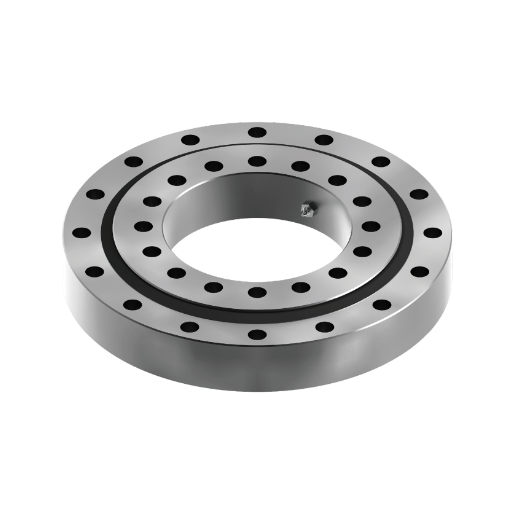
Factors to consider: load capacities and moment loads
While picking a slewing ring bearing, reviewing its load capacities is extremely important. This includes evaluating the bearing’s axial and radial loads as well as supporting any combined application loads. Slewing bearings are made to sustain a variety of forces from both rotating and stationary parts. Not verifying the capacity range of the bearing and load may lead to drastic failure or damage. All these requirements should be tailored to the equipment to work properly. Equipment such as cranes or heavy-duty excavators has a high load, which increases wear and tear on the bearings and therefore needs slewing ring bearings with increased robustness and performance.
Slewing bearing moment loads have significance when it comes to bearing selection since they calculate the torque produced by a load placed at a distance from an axis of rotation. Moment loads impact the stability of the structure, which is connected directly to it. Mechanisms like robotic arms or tower cranes experience large offset loads or extended arms and greater bending moments. In these cases, the stress needs to be distributed more evenly; therefore, reinforced geometries or multi-row bearings work best. In addition, preoperational simulations and finite element analysis can assist in estimating the influence of moment load before the system is in use.
The operating environment is a critical external factor that correlates with load considerations. Derogatory factors such as extreme temperatures, the presence of moisture, dust or debris, and even contamination require materials as well as designs that are durable and perform optimally. To curb material wear when operating in harsh conditions, sealed slewing bearings with corrosion resistant coating are used. Ultimately, detailed analysis of steerable load alongside environmental factors greatly reduces failure risk while increasing operational efficiency.
Understanding four-point contact and eight-point contact designs
- Four-Point Contact Designs: With four-point contact bearings, both axial and radial loads are transferred in neater compact dimensions, making them suitable for space-constrained applications. The four-point characteristic feature of this design is that contact is made at four distinct points between the balls and the raceways. This arrangement further aids in increasing the load capacity while optimizing the material usage and overall size of the structure. Such designs are common in turntables, cranes, and wind turbines, where both radial and axial loads are encountered. However, they require precise alignment and adequate lubrication to prevent high localized stress conditions that result in accelerated wear or structural damage.
- Eight Point Contact Designs: To avoid using single rows, eight-point contact bearings are designed with two rows of balls to create eight contact points, which aid in stability and load distribution. This dual row system enhances the industrial applications because it helps to distribute the load over a greater region, which is useful during high moment loads and when forces act on the system unbalanced. Dynamic conditions in aerospace, shipbuilding, and machining industries increase the reliance on eight-point contact designs. Moreover, these bearings provide greater stiffness and resistance to misalignment than the four-point ones, although this does increase size and weight.
A meticulous analysis of the load and the application needs to be performed when choosing between four-point and eight-point contacts so that a proper compromise between performance, weight, and cost is achieved for the specific requirements.
The significance of gear teeth and internal gear options
Achieving certain degrees of torque transmission and mechanical efficiency relies heavily on the configuration and layout of gear teeth. Worn gear teeth are precision-engineered to allow balanced load distribution, reduction of wear, and enhancement of gear life even in rigorous working environments.
Used in internal mechanisms of some compact systems, internal gears serve their purpose best for heavy torque exertion and rotational force actions, wherein a small area is available. They are paired together internally with a smaller pinion and incorporated into planetary gear systems because of the high torque multiplication ratio that can be achieved. These constitute the most compact geared motors, making them very useful in robotics, automotive machines, and heavy industry machinery.
Knowledge of tooth geometry, such as pressure angles, tooth involute profiles, and finite element analysis (FEA), along with material fatigue testing, helps engineers analyze the performance and optimize the tooth durability and functionality. New technologies like composite materials and additive manufacturing open new possibilities to shift the structure of gears on an additional axis without performance degradation. These innovations highlight the need for proper selection of gear teeth sets and internal gear arrangements to satisfy the ever-growing, sophisticated requirements of the industry.
What are the maintenance and lubrication requirements for slewing bearings?
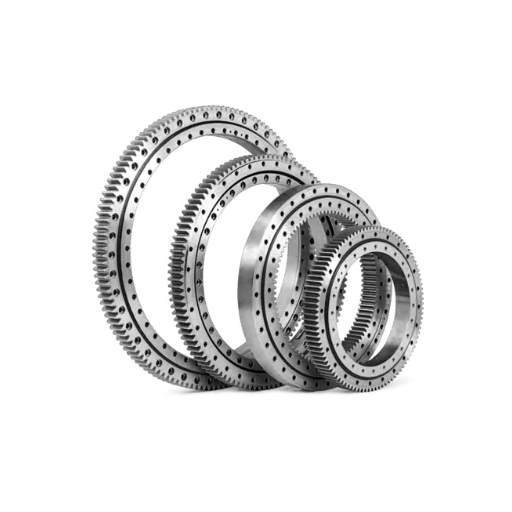
Importance of regular lubrication for longevity
Slewing bearings require proper lubrication and maintenance on the bearings to function seamlessly and last long. Lubrication protects components from damage due to friction or corrosion and mitigates metal-to-metal contact between bearings. Lack of proper lubricating oil causes severe damage; slewing bearings face increased wear, overheating, noise, malfunction, and thermodynamic stress.
Current industrial practices suggest high-quality grease for lubrication based on: grade, environmental features like temperature, exposure to harmful elements, load, and rotation speed. Suggested regimens include routine lubricating intervals and focus on refilling grease after prolonged use, wear and tear cycles, and exposure to innervating shifted environments or extreme conditions. Studies show that degradation-free lubrication can increase bearing lifespan by as much as 50% when applied according to the manufacturer’s guidelines on viscosity, pressure, and strength.
Maintenance on heavy machinery is not only strenuous but also manually intensive. This change has been popularized throughout the industry, reducing the manpower required and improving reliability. Centralized grease systems ensure that every part of the machine receives the predetermined intervals of grease on every critical component of the machinery. In turn, this guarantees optimal lubricant retention on the parts while reducing waste. Further custom monitoring of the lubricant via advanced techniques, rid maintenance regimens of unnecessary scheduled maintenance, helps locate contamination quickly, and prevents unplanned operational downtime at the unfavorable expense.
Common maintenance practices for slewing rings
Proper maintenance of slewing rings is crucial for improving their longevity and ensuring reliable operation in critical applications. For best outcomes, experts in the industry advise on these practices:
- Adequate Attending: Slewing rings should receive proper attending so that there is no undue wear and friction on the raceway and rolling elements. Use the manufacturer’s recommended grease, and apply it through the grease fittings at intervals stated in the operational manual. All lubing points must be serviced uniformly in order to avoid uneven wear.
- Torque Checking of Bolts: Assigned bolts of slewing rings must be checked at intervals for proper mid-step tension with a torque wrench calibrated for tightness. The risk of becoming and remaining loosened due to torque discrepancies is failure initiated by excessive load.
- Seal Integrity Inspections: Seals enable slewing ring mechanisms’ rotational movements while simultaneously ensuring the shielding of low pressures and contaminants externally. Check elastomers sealed for signs of defects, fracturing, or wear. Damaged elastomer becomes exiled environmental parts on the zero air side, and the weak zone side must be deployed.
- Wear and Clearance Measurement: On a dial indicator or using other measurement precision tools, keep track of the axial and radial clearances of the slewing ring over time. Clearances that are too large suggest internal wear which negatively affects stability and system functionality. If there are unacceptable deviations, prompt corrective action must be taken.
- Structural Inspection: Check deformation, corrosion, or cracks on the slewing ring’s supporting structure, as they can compromise load distribution. Also, make sure the flat and the surface of the ring, as well as its mounting plane on the gimbal base.
- Monitoring operating conditions: Installing condition monitoring technologies such as vibration analysis and temperature sensors not only improves maintenance but provides real time information on the performance of the slewing ring. Changes in vibration patterns, along with increases in temperature tend to indicate lubrication problems, bearing failure or other issues that require immediate attention.
- Contamination Prevention: Where possible, use shields or covers that are lubricated to block the ingress of contaminants from outside. Clean the working area so that dust or abrasive particles do not gain access to the slewing ring system.
Integrating these maintenance actions alongside performing proactive maintenance with advanced diagnostics tools allows operators to reduce unplanned failures, ensuring the slewing rings function optimally. Proper documentation of inspection results helps improve trend monitoring and advanced predictive trend analysis.
Signs of wear and when to replace your slewing bearing
Monitoring a slewing bearing for damage is critical to avoiding equipment downtime and failure. Key indicators include odd sounds like grinding or knocking that can indicate raceway or rolling element damage. Ramping up rotational resistance can also indicate movement restriction caused by internal misalignment or contamination. Other major indicators of bearing damage include cracks, material deformation, and excessive corrosion.
A common method involves measuring radial and axial play. Looseness often has a large impact on bearing functionality, ultimately decreasing the performance of connected machinery. Further, monitoring the lubrication condition is crucial as inadequate lubricant levels can lead to overheating, high friction, and material erosion.
The bearing needs to be changed if wear is greater than industry-set tolerance levels. Critical raceway benchmarks also need to be assessed alongside industry standards. Harnessing various methods like vibration analysis and ultrasonic testing in concert with ongoing inspections aids in slewing bearing assessment. This, along with observing the recommended conditions of operation, will extend device lifespan, reduce unexpected downtime, and decrease replacement frequency.
How do thin-section bearings differ from standard ones?
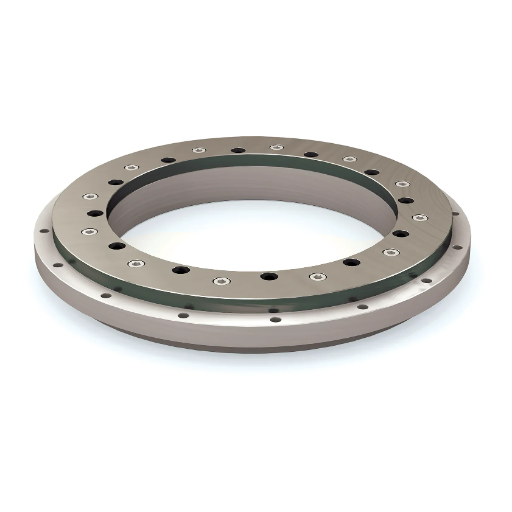
Benefits of using thin section and pre-engineered light profile slewing
Thin-section and light pre-engineered profile slewing bearings present several distinct benefits, especially concerning weight, space, and precision. Compact and lightweight bearings reduce energy and operational costs due to their better performance. This feature is particularly useful in aerospace, robotics, and medical devices, which need lightweight materials.
Moreover, thin section bearings have a small cross-sectional profile, however keeping a high load-carrying capacity and rigidity. This allows them to be used in applications with tight tolerances and high precision movement control. Similar to pre-engineered light profile slewing bearings, they are also optimized for performance and offer greater durability and rotation smoothness under variable load conditions.
Reliability of the bearing is also aided by advanced materials and manufacturing processes. For example, the use of high-grade alloys and precision surface treatment increases their resistance to wear, corrosion, and fatigue, which allows them to serve their function in harsh environments for a long time. Additionally, their modular configuration allows easy design customization, which simplifies assembly and maintenance workflows.
In conclusion, the balance of strength and efficiency makes thin-section and light pre-engineered profile slewing bearings ideal for advanced engineering projects.
Comparison of thin-section bearings and traditional designs
Like many other machines, hybrid electric vehicles (HEV) use different kinds of batteries and motors to drive the vehicle. Dual mode hybrid electric vehicles feature two distinct driving modes: internal combustion and electric. This arrangement allows the driver to manually choose the vehicle’s driving mode. This requires a user-friendly interface and is usually merged with artificial intelligence that helps in making real time decisions.
As with many machines, their design integrates multiple aspects that need to work in harmony. Ease of use, comfort, safety, and environmental acceptance are incorporated in a manner that guarantees the ease of use, or as we have dubbed it, operator multifunctional ergonomics.
Furthermore, the data outlines the benefits of thin-section bearings over other types about cost throughout the lifespan of the product. Their light construction can minimize overall system wear, decrease energy expenditure, and incur long-term savings in advanced engineering and industrial applications. On the other hand, while traditional bearings are cheaper in the beginning, their operational costs owing to heavier structural requirements and maintenance needs over time can be burdensome.
Therefore, choosing between thin-section bearings and traditional designs depends on distinct application criteria, particularly spatial constraints, load limits, and life cycle cost minimization strategies.
Choosing the right thin section for optimal economy and capacity
Meeting the economic and functional objectives when picking a thin-section bearing requires evaluating an extensive range of factors. Some of these include: load capacity, operational speed, settings, and environmental factors. For compact designs, mounted thin-section bearings have enhanced material efficiency relative to achieving the required load capabilities. Weakness in thin-section designs due to high load impacts is lessened with the modern advancements in material science using high-performance alloys and ceramic hybrids, increasing the strength and durability.
Minimizing total lifecycle cost can also provide an economic advantage. This includes more than just the initial expenditure; it also includes reduced friction loss, lubrication, and prolonged service life—all important for lowering total operational expenses. In other case studies, thin-section bearings were compared with traditional counterparts. Maintaining the same operational environment, thin-section bearings showed a 25% reduction in maintenance-related downtimes, making them more efficient in robotics and aerospace. Exceeding bearing specification while controlling extremes in temperature and aggressive corrosives enhances operational life and effectiveness.
Through the use of modern calculation methods and simulation software, engineers can model the performance of thin-section bearings with varying loads, enabling more accurate selections to be made for specific applications. Such an optimized strategy helps preserve the economy and capacity of bearing systems while ensuring that their reliability and efficiency is not jeopardized.
Frequently Asked Questions (FAQ)
Q: What is a slewing bearing, and what are its applications?
A: A slewing bearing, often referred to as a slewing ring, is a rotational bearing that accommodates axial, radial, and moment loads. These bearings are commonly used in a range of applications, including cranes, excavators, wind turbines, and other heavy machinery, where rotational movement is necessary.
Q: How does a four-point contact ball bearing work?
A: A four-point contact ball bearing is designed to handle axial loads in both directions, as well as radial loads and moments. It has a single row of balls that make contact at four points, allowing for precise movement and high load capacity. This makes it suitable for applications like slewing bearings in cranes and turntable applications.
Q: What are the differences between a slewing bearing with four-point contact and one with eight-point contact?
A: A slewing bearing with four-point contact typically involves a single row of balls that touch the raceway at four points, providing stability and load capacity. In contrast, a slewing bearing with eight-point contact uses a more complex arrangement that allows for higher load capacities and better resistance to deformation, making it ideal for heavier-duty applications.
Q: What advantages do slewing bearings with crossed cylindrical rollers have?
A: Slewing bearings with crossed cylindrical rollers offer high rigidity and load-carrying capacities, especially in applications with heavy radial loads. The crossed roller arrangement provides precise movement and is often used in applications requiring high precision and stability, such as robotics and medical equipment.
Q: What is the importance of ball diameter in slewing ring bearings?
A: The ball diameter in slewing ring bearings is crucial as it directly influences the bearing’s load capacity and rotational stability. Larger ball diameters can support heavier loads and offer greater durability, making them suitable for heavy-duty applications like construction machinery and wind turbines.
Q: How do standard slewing bearings differ from custom slewing rings?
A: Standard slewing bearings are mass-produced and designed to fit a wide range of applications with common specifications. Custom slewing rings, on the other hand, are tailored to meet specific design requirements and performance criteria, allowing for optimization in unique or specialized applications.
Q: What are the benefits of using heavy-duty slewing rings?
A: Heavy-duty slewing rings are designed to withstand extreme loads, harsh environments, and long operating cycles. They provide high reliability and longevity in critical applications such as offshore cranes, mining equipment, and large-scale construction machinery.
Q: What is the role of a turntable bearing in machinery?
A: A turntable bearing facilitates the rotational movement of a platform or structure, allowing for smooth and efficient motion. It is commonly used in applications like rotating stages, cranes, and other equipment where precise rotation is essential.
Q: How are slewing ring bearings designed for specific applications?
A: Slewing ring bearings are designed by considering factors such as load capacity, rotational speed, environmental conditions, and space constraints. This ensures that they meet the specific demands of the application, providing optimal performance and reliability.
UCTH213-40J-300 with Setscrew(inch)
CNSORDERNO: Normal-duty(2)
TOGN: UCTH213-40J-300
SDI: B-R1/8
SD: 2 1/2
UCTH212-39J-300 with Setscrew(inch)
CNSORDERNO: Normal-duty(2)
TOGN: UCTH212-39J-300
SDI: B-R1/8
SD: 2 7/16
UCTH212-38J-300 with Setscrew(inch)
CNSORDERNO: Normal-duty(2)
TOGN: UCTH212-38J-300
SDI: B-R1/8
SD: 2 3/8
UCTH212-36J-300 with Setscrew(inch)
CNSORDERNO: Normal-duty(2)
TOGN: UCTH212-36J-300
SDI: B-R1/8
SD: 2 1/4
UCTH211-35J-300 with Setscrew(inch)
CNSORDERNO: Normal-duty(2)
TOGN: UCTH211-35J-300
SDI: B-R1/8
SD: 2 3/16
UCTH211-34J-300 with Setscrew(inch)
CNSORDERNO: Normal-duty(2)
TOGN: UCTH211-34J-300
SDI: B-R1/8
SD: 2 1/8









